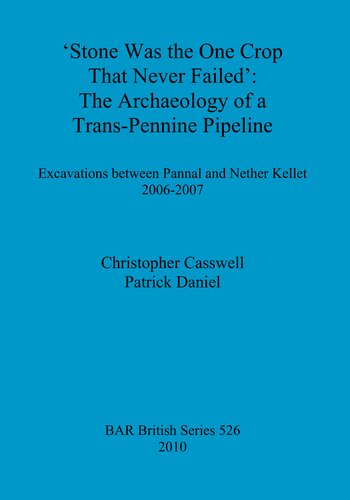

Most ebook files are in PDF format, so you can easily read them using various software such as Foxit Reader or directly on the Google Chrome browser.
Some ebook files are released by publishers in other formats such as .awz, .mobi, .epub, .fb2, etc. You may need to install specific software to read these formats on mobile/PC, such as Calibre.
Please read the tutorial at this link: https://ebookbell.com/faq
We offer FREE conversion to the popular formats you request; however, this may take some time. Therefore, right after payment, please email us, and we will try to provide the service as quickly as possible.
For some exceptional file formats or broken links (if any), please refrain from opening any disputes. Instead, email us first, and we will try to assist within a maximum of 6 hours.
EbookBell Team

4.7
106 reviewsIn 2006 and 2007, a 94km-long gas pipeline was excavated across the Pennines, from Pannal in North Yorkshire, to Nether Kellet in Lancashire (N/W England). Around twenty archaeological excavations were undertaken to mitigate the impact of the construction of the pipeline on the archaeology of the route, and these form the subject of this volume. The excavated remains were generally slight and were widely scattered along the route; the range of periods they represent is equally broad and intermittent. The earliest recorded evidence was a Mesolithic flint scatter from Ribblesdale. Bronze Age activity was represented by ringworks, burnt mounds and rock art, with an apparent concentration on the Craven lowlands during this period. The prehistoric remains seem to reveal a low and shifting population, more concerned with monumentality and remembering than with settlement and land division. Very few traces of activity attributable to the 1st millennium BC were encountered. Romano-British remains were surprisingly sparse considering the military infrastructure and transport network inserted into the region at this time. The pattern of slight and transient landuse with low levels of material culture, established in prehistory, appears to have been an enduring characteristic of the area. The excavations along the Pannal to Nether Kellet pipeline have undoubtedly helped to characterise the archaeological resource of the Pennine river valleys through which it passed, and have refined the understanding of the distribution and chronology of various activities and site types across a range of time periods. Some questions have been answered, and many new ones framed. These sites now exist as a comparator for future work, both in the local area and nationally.